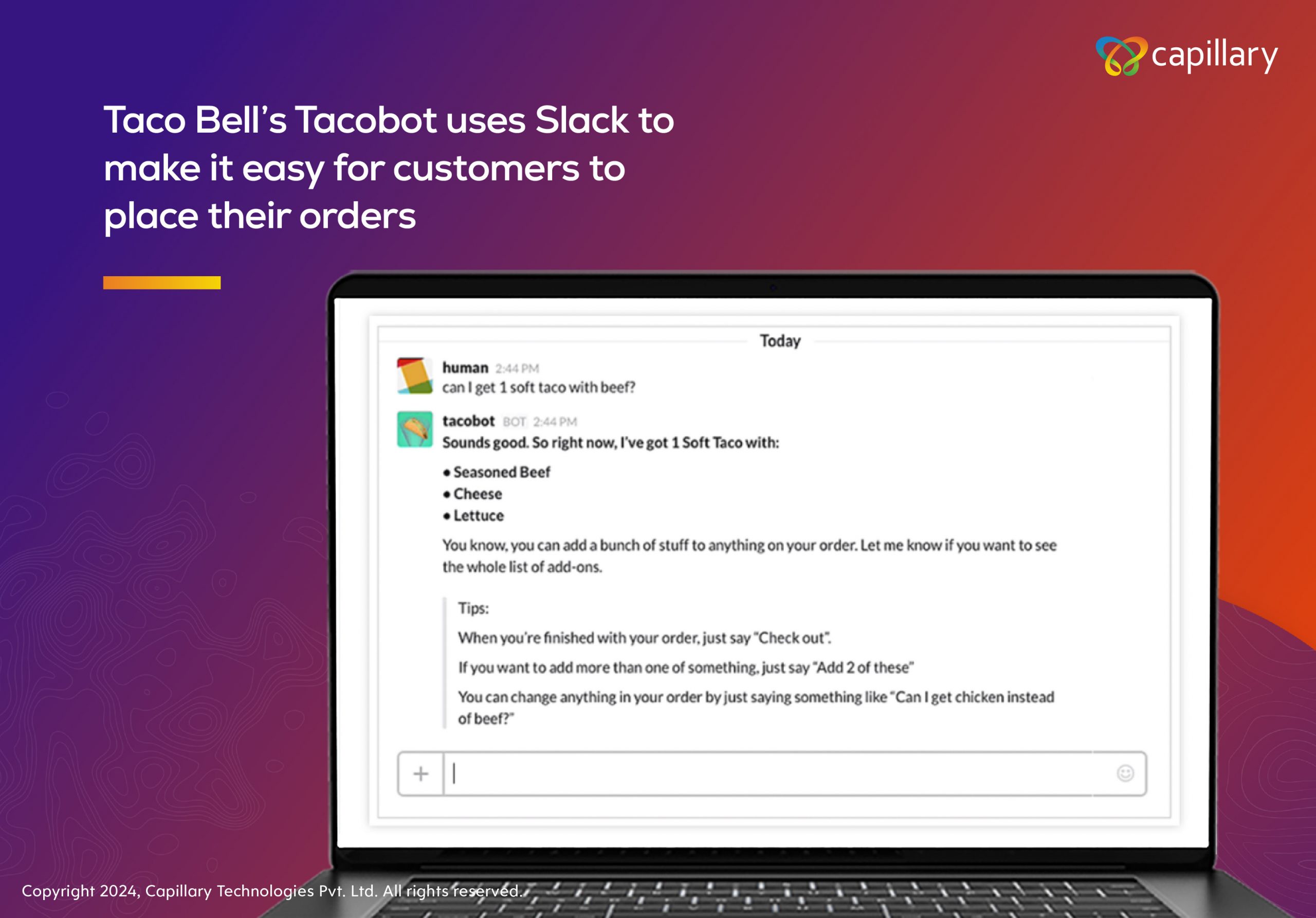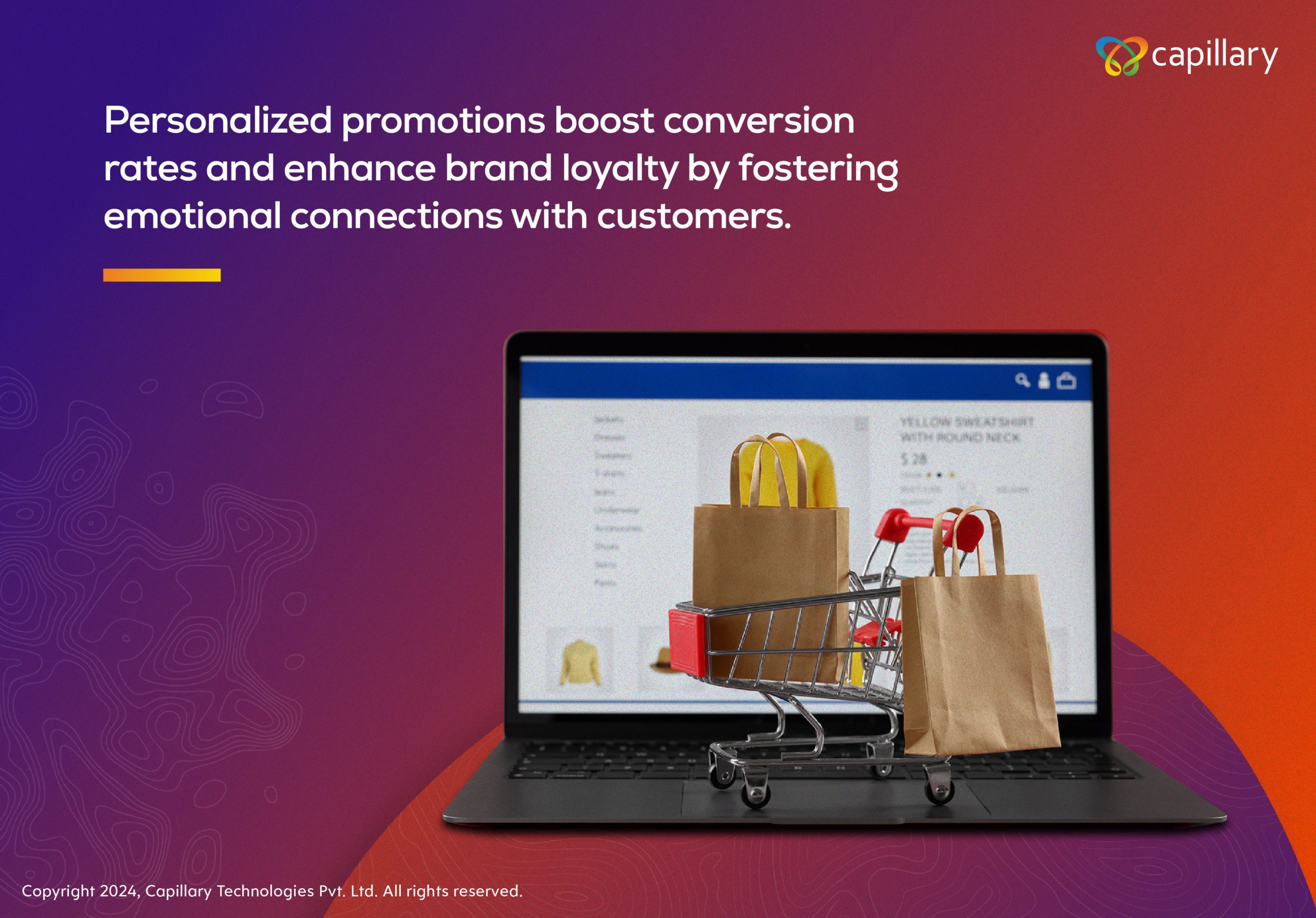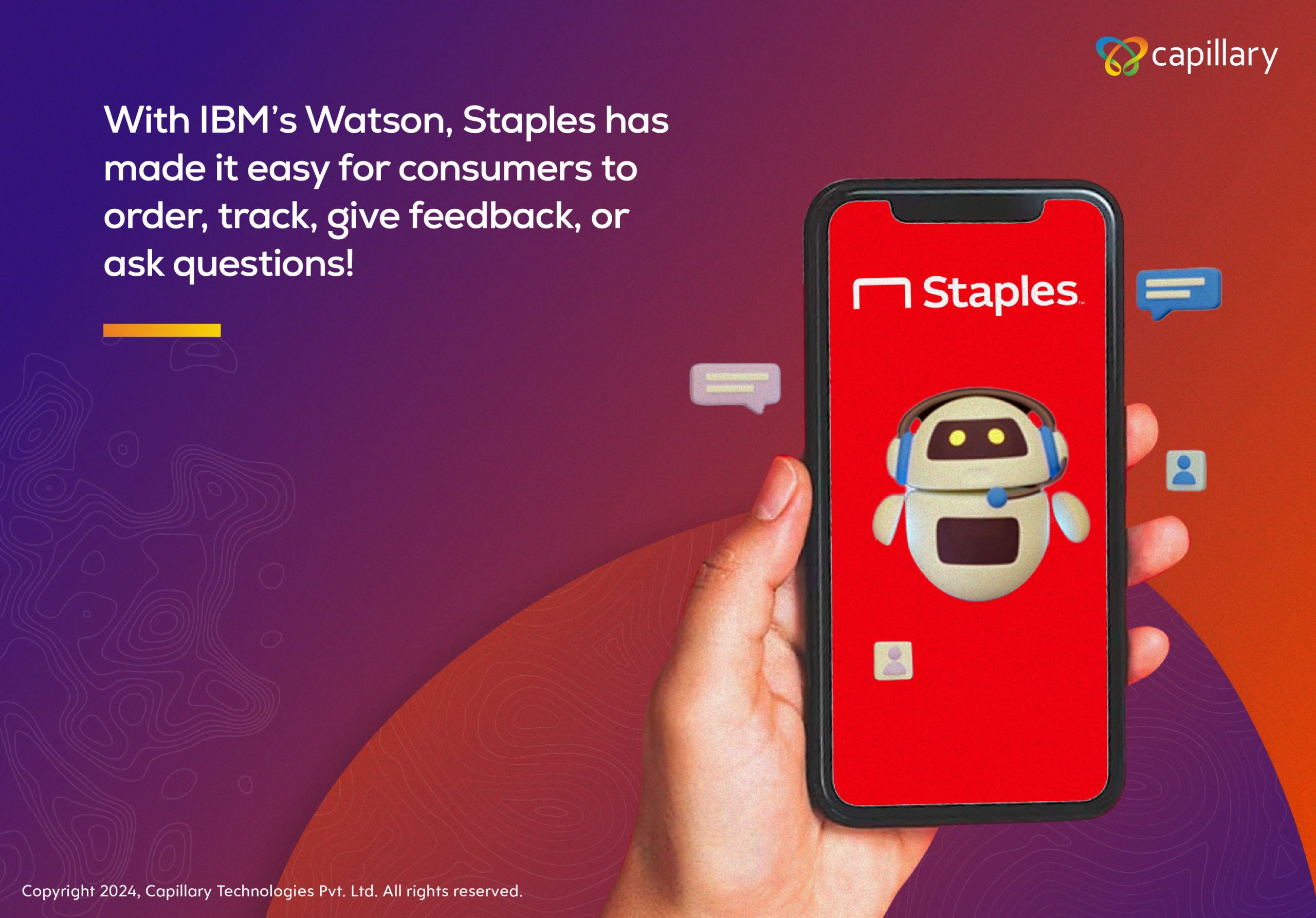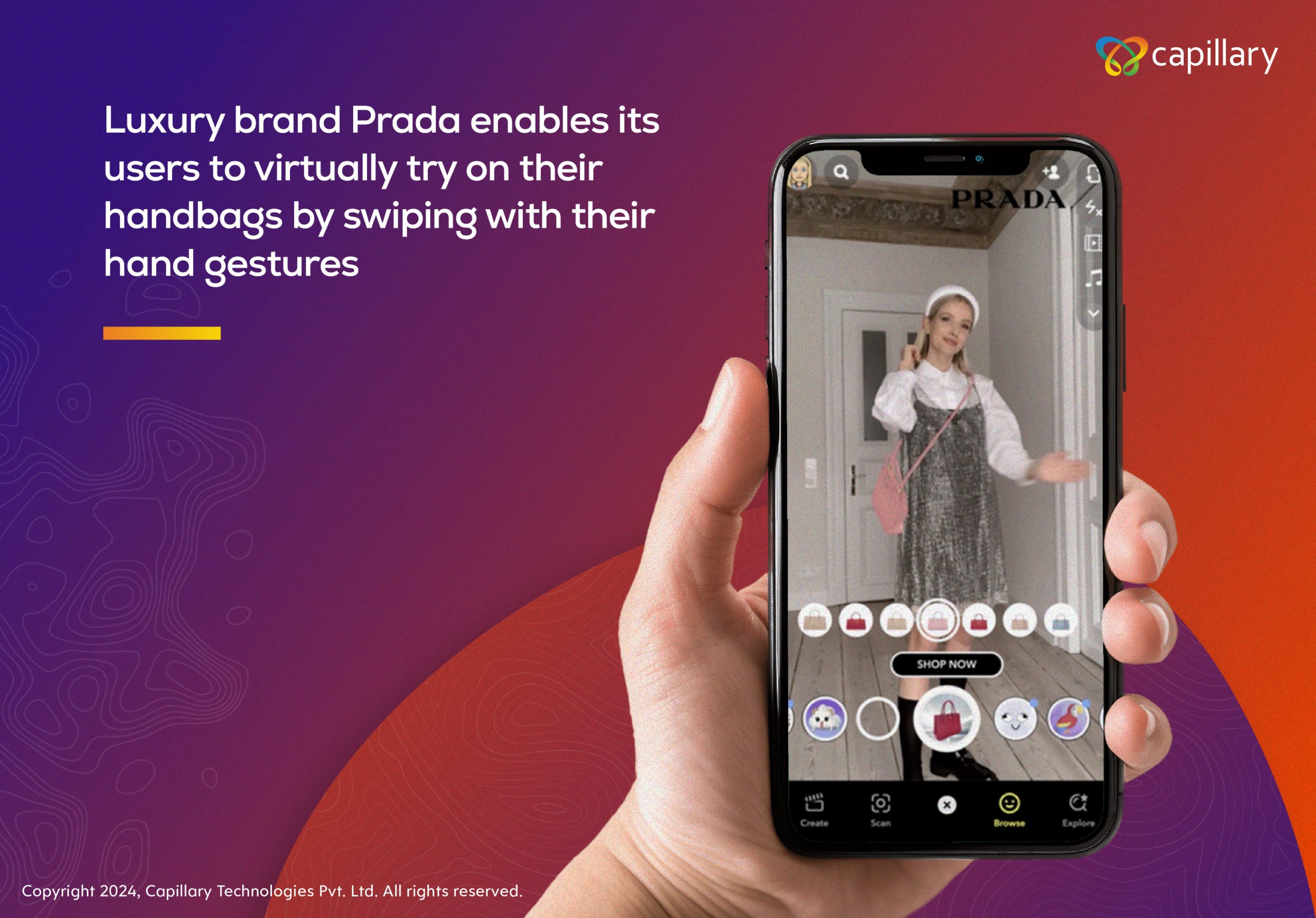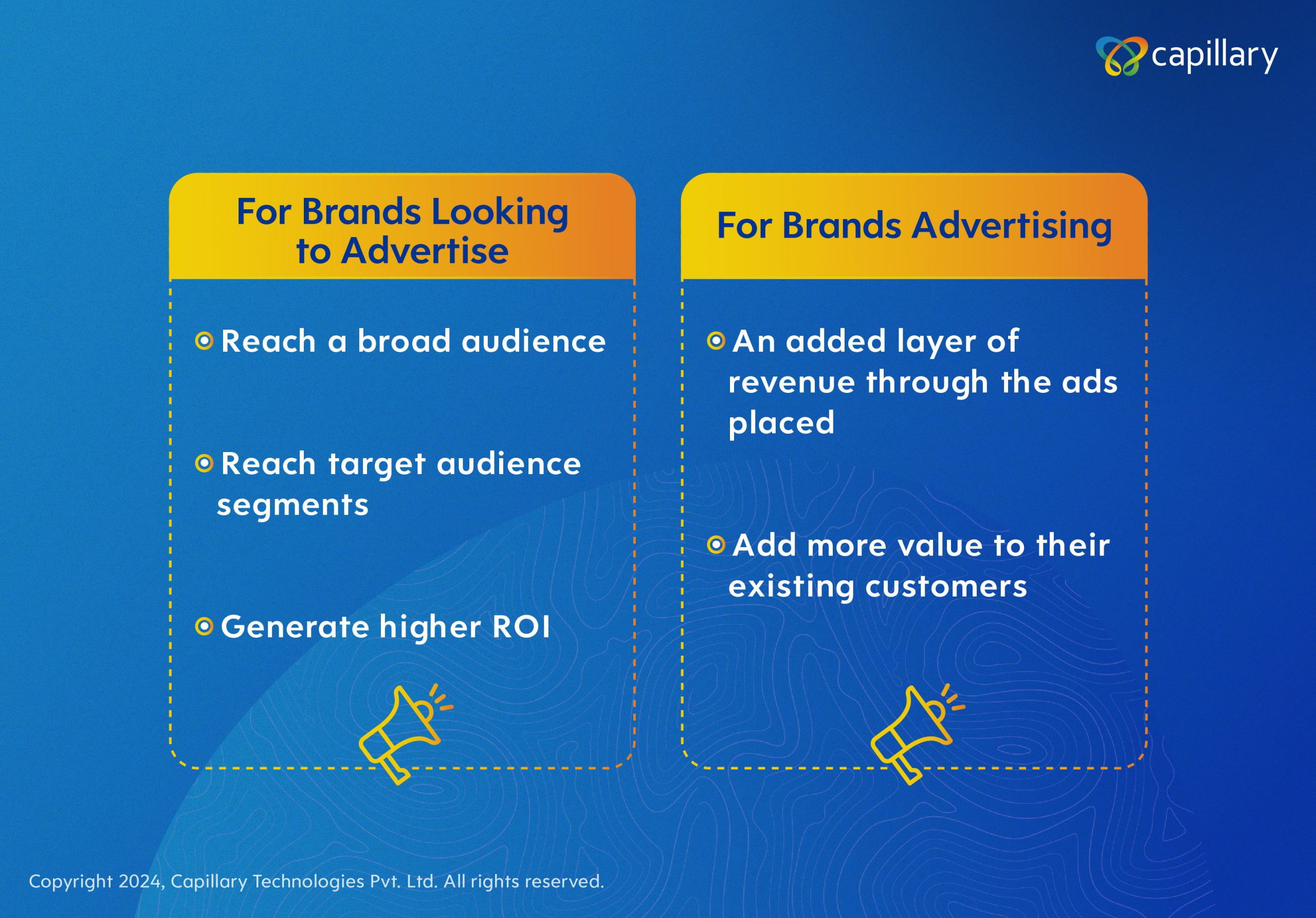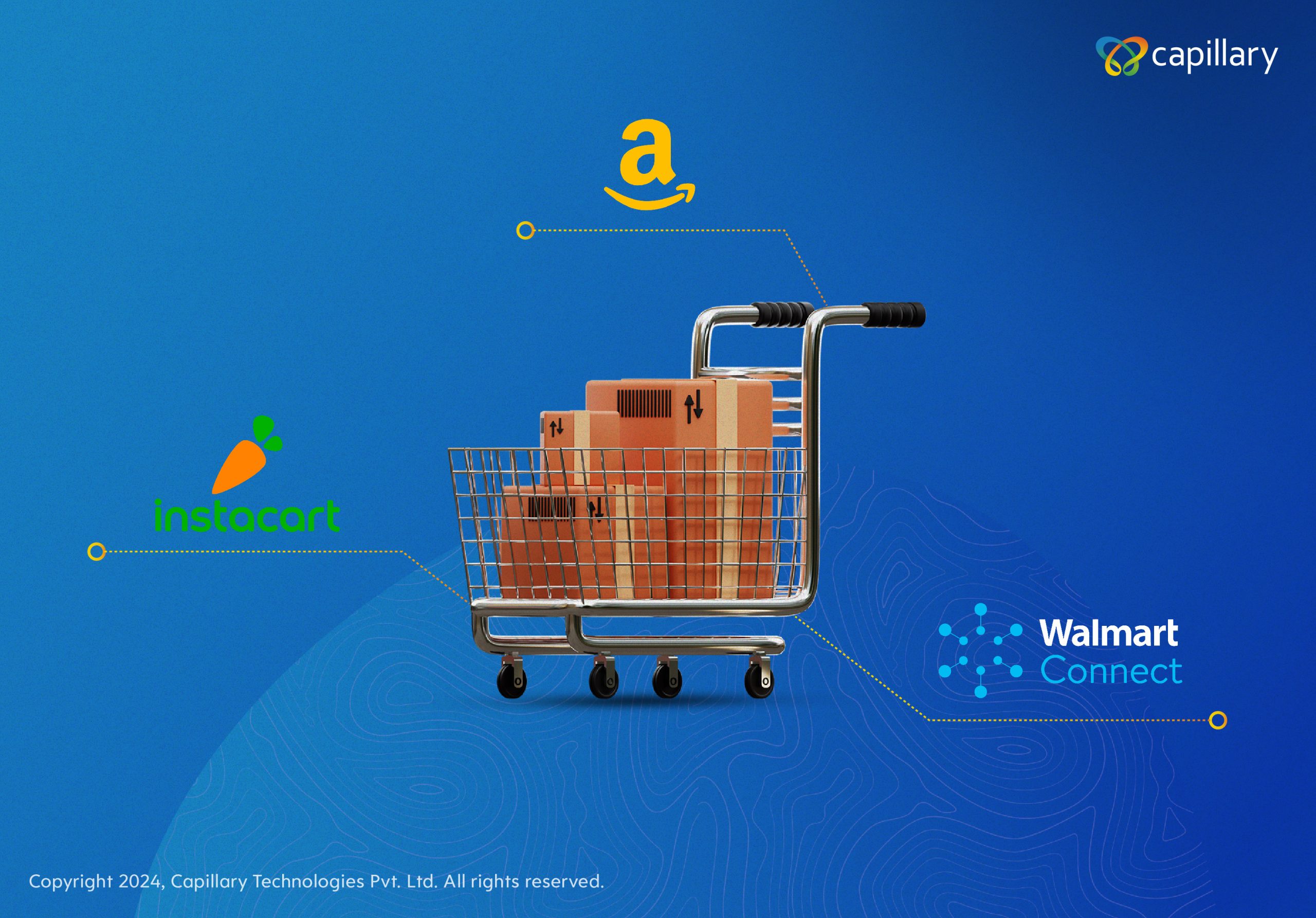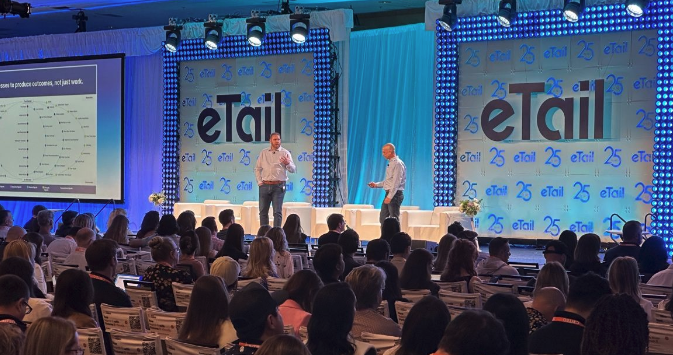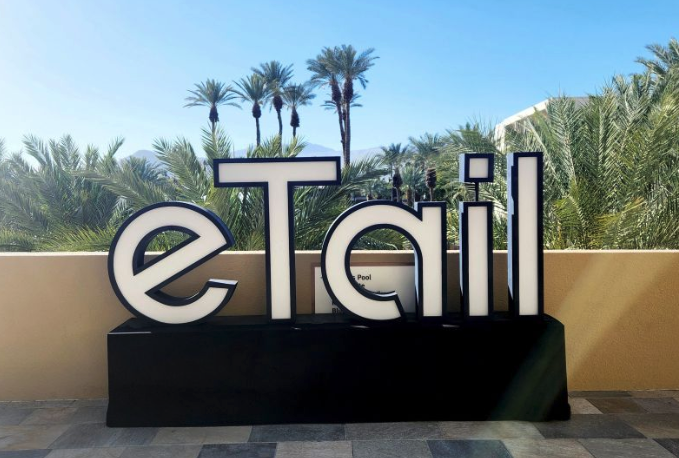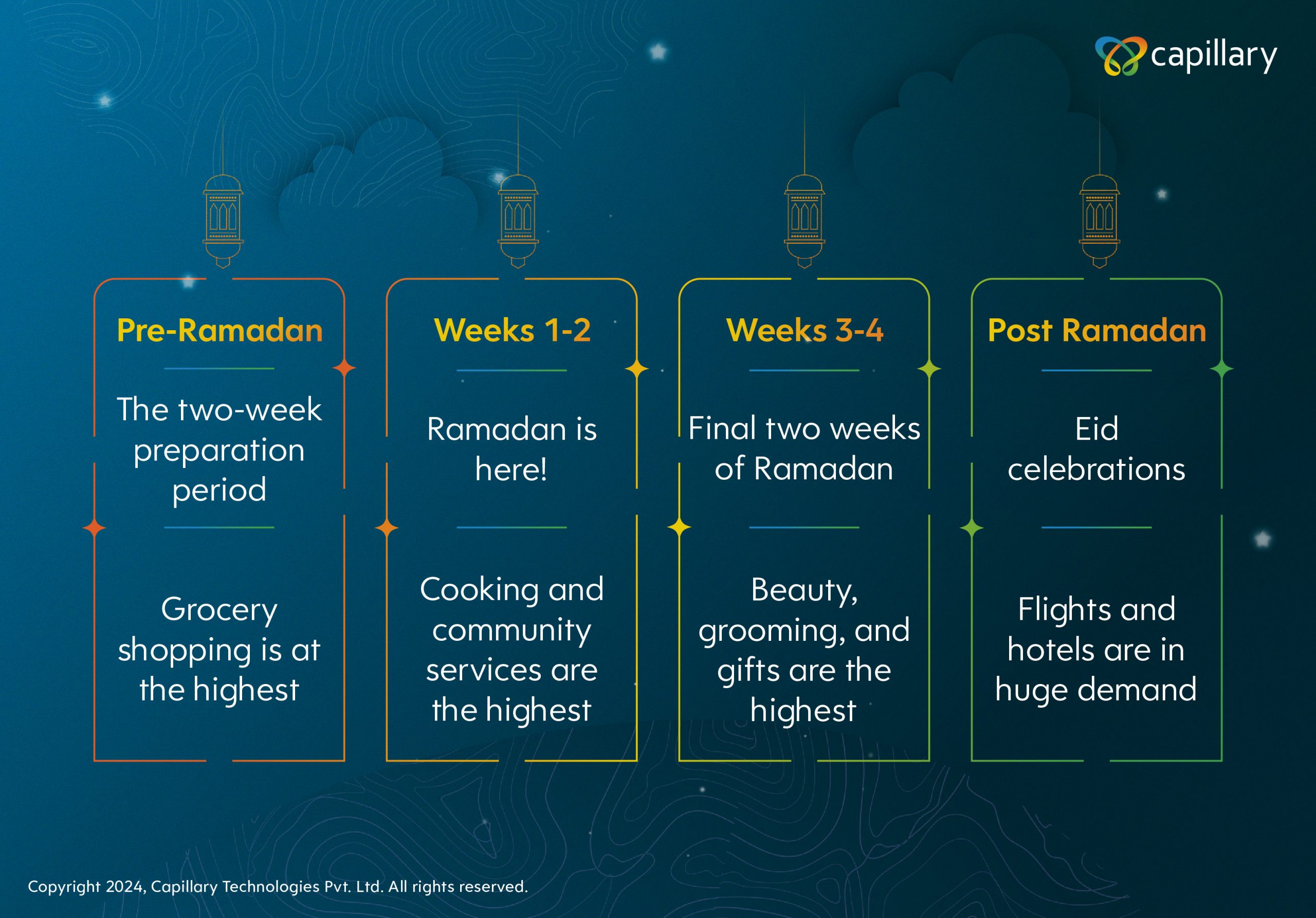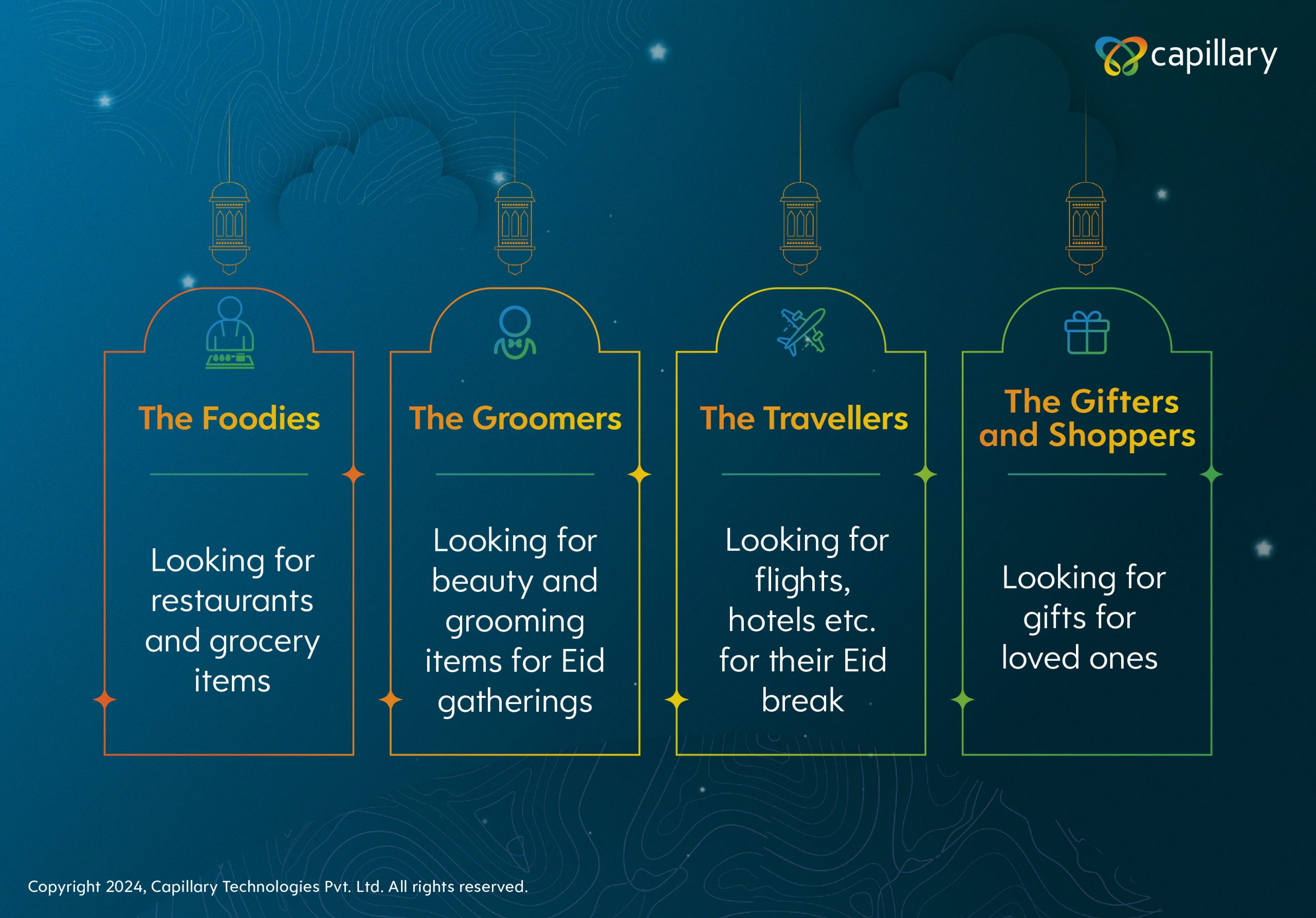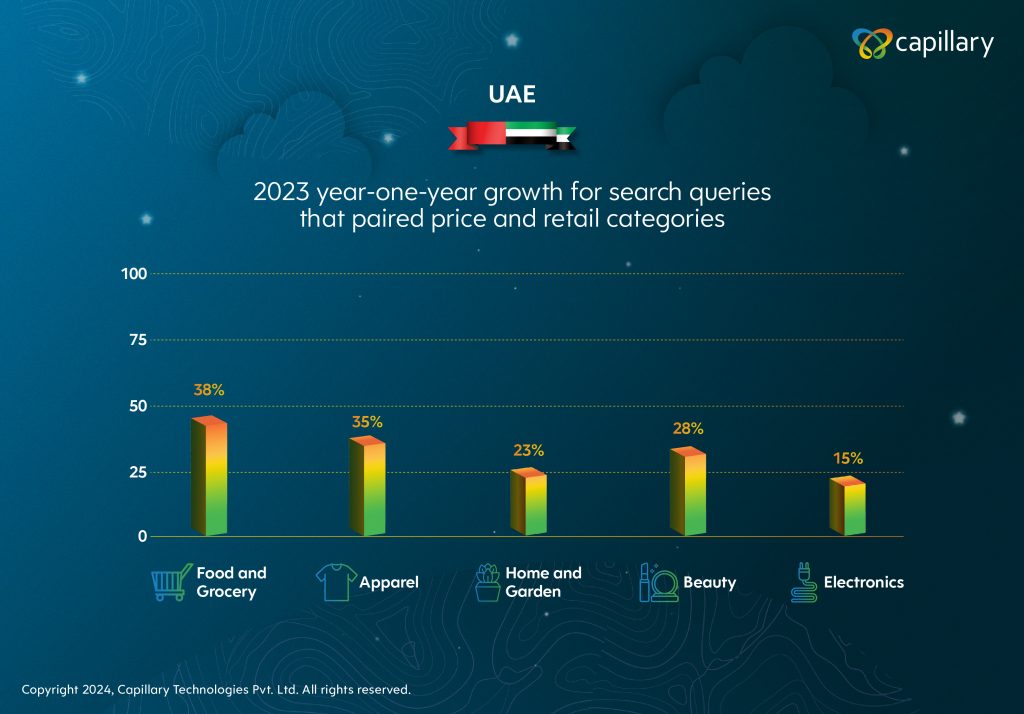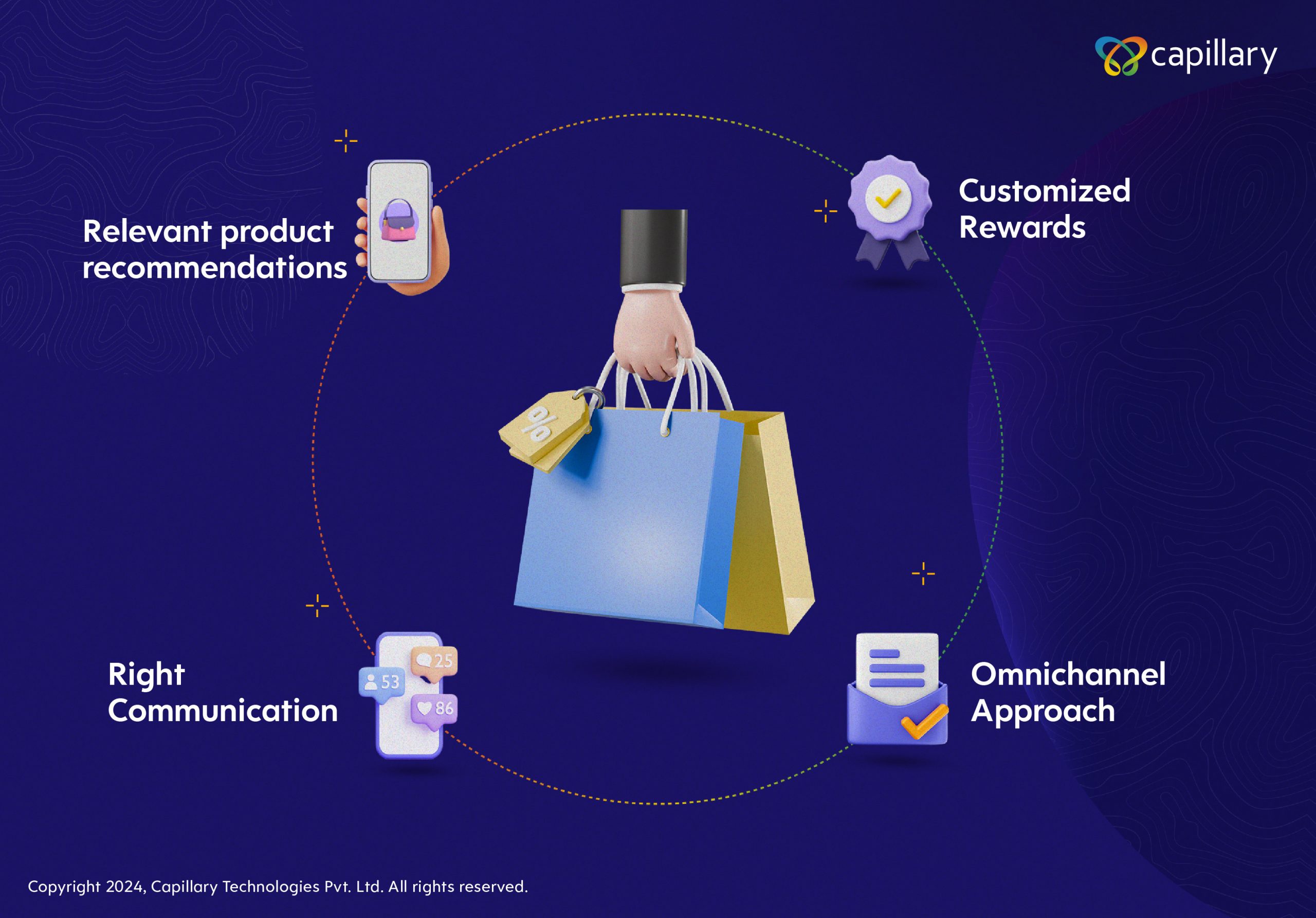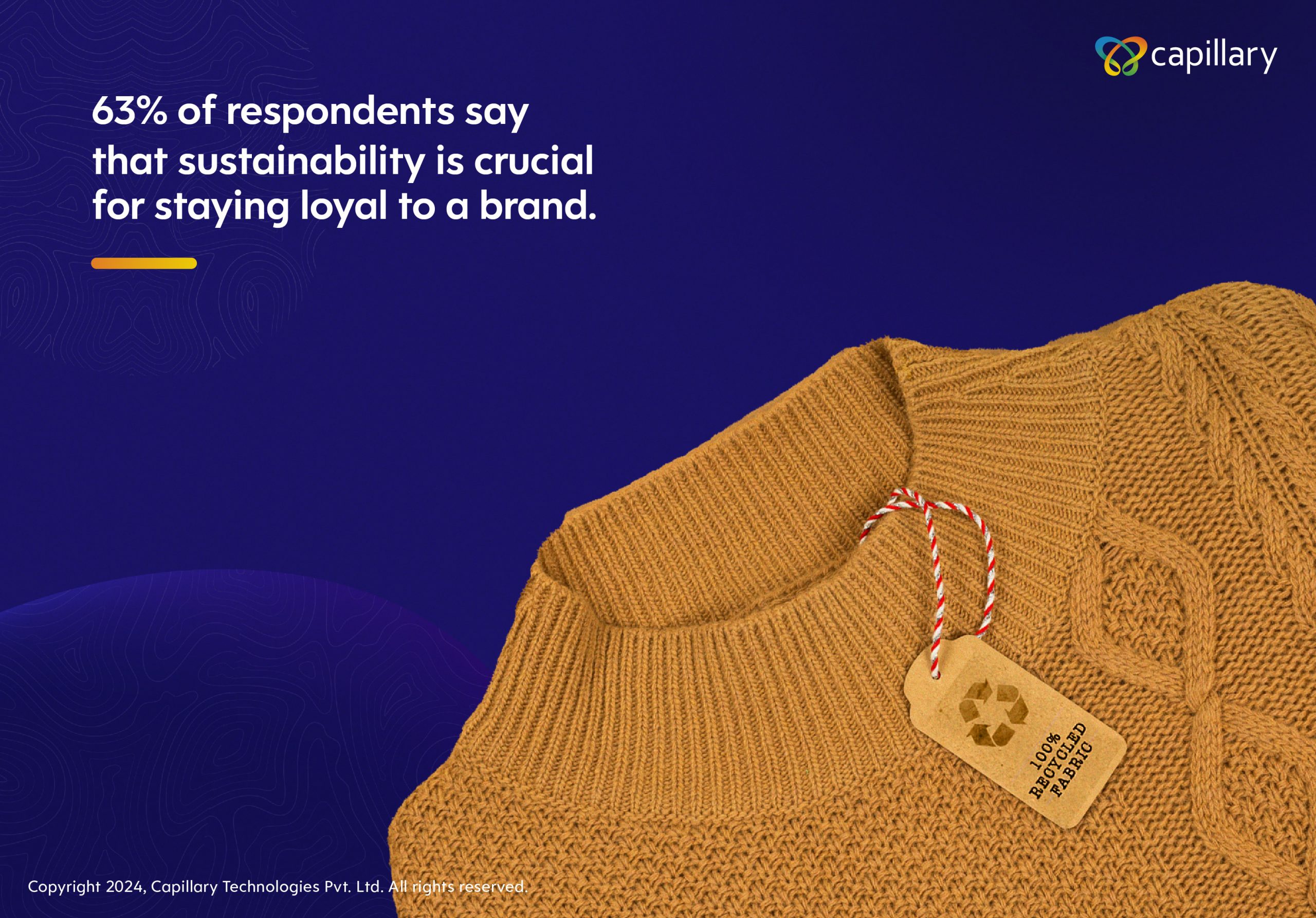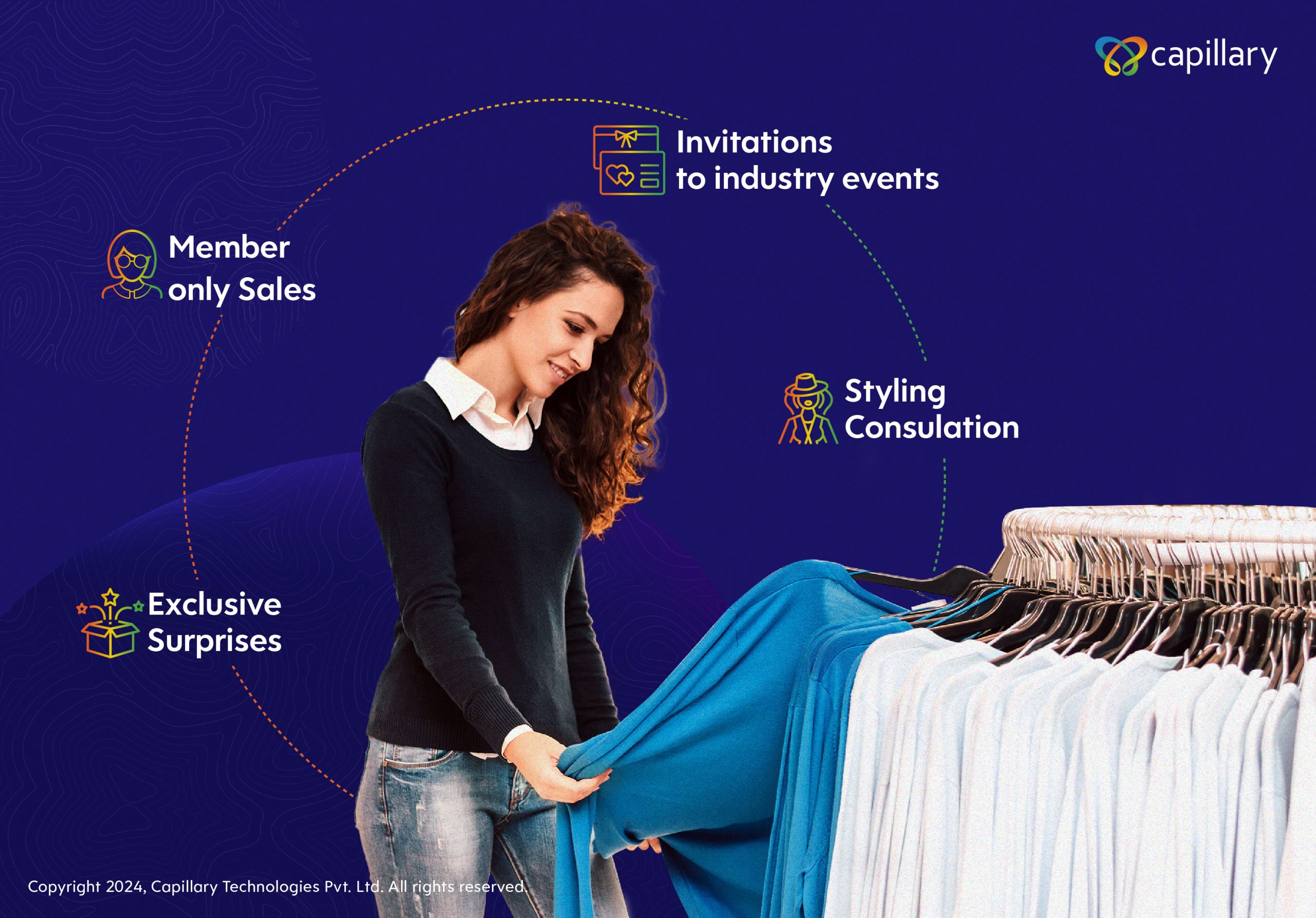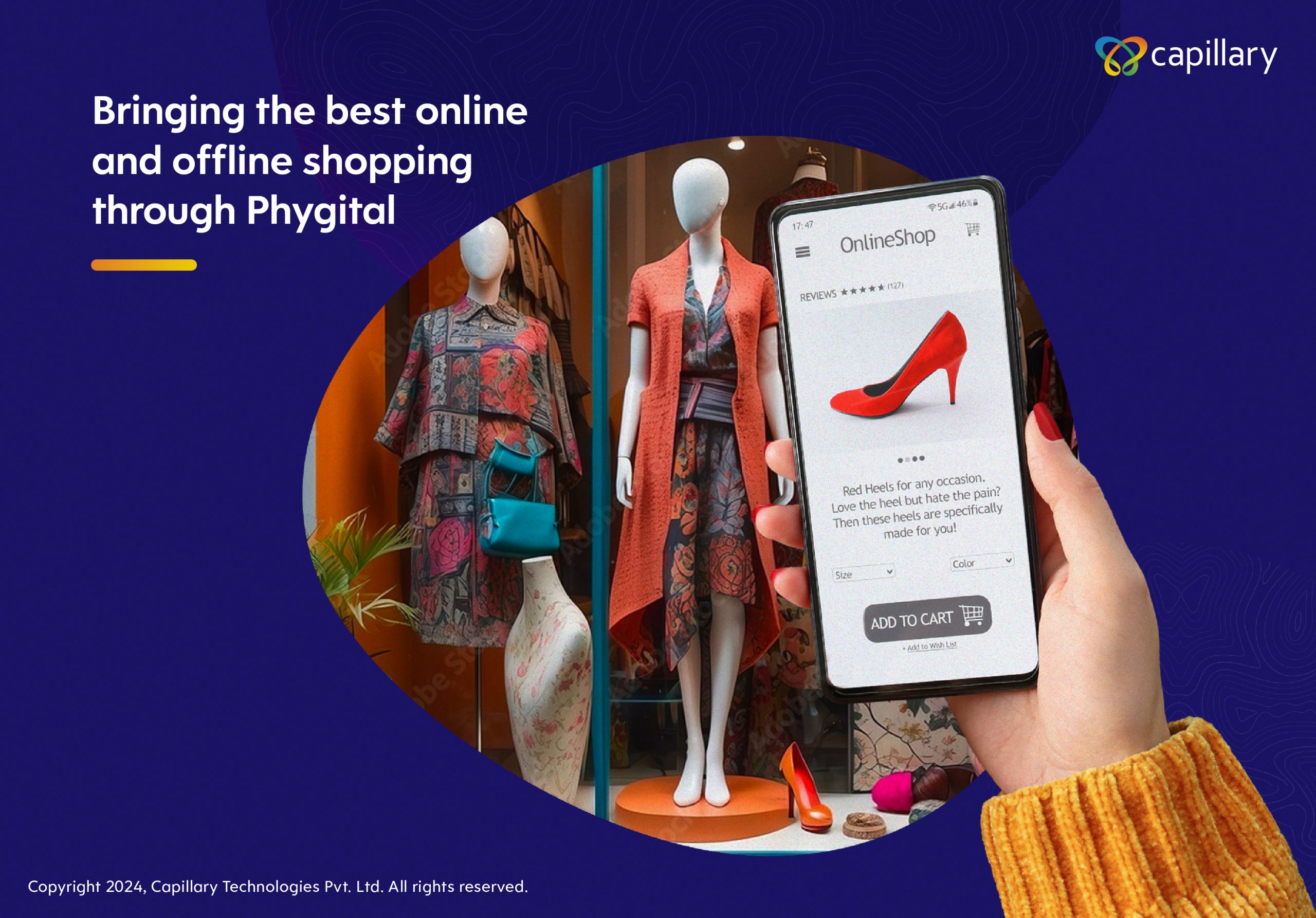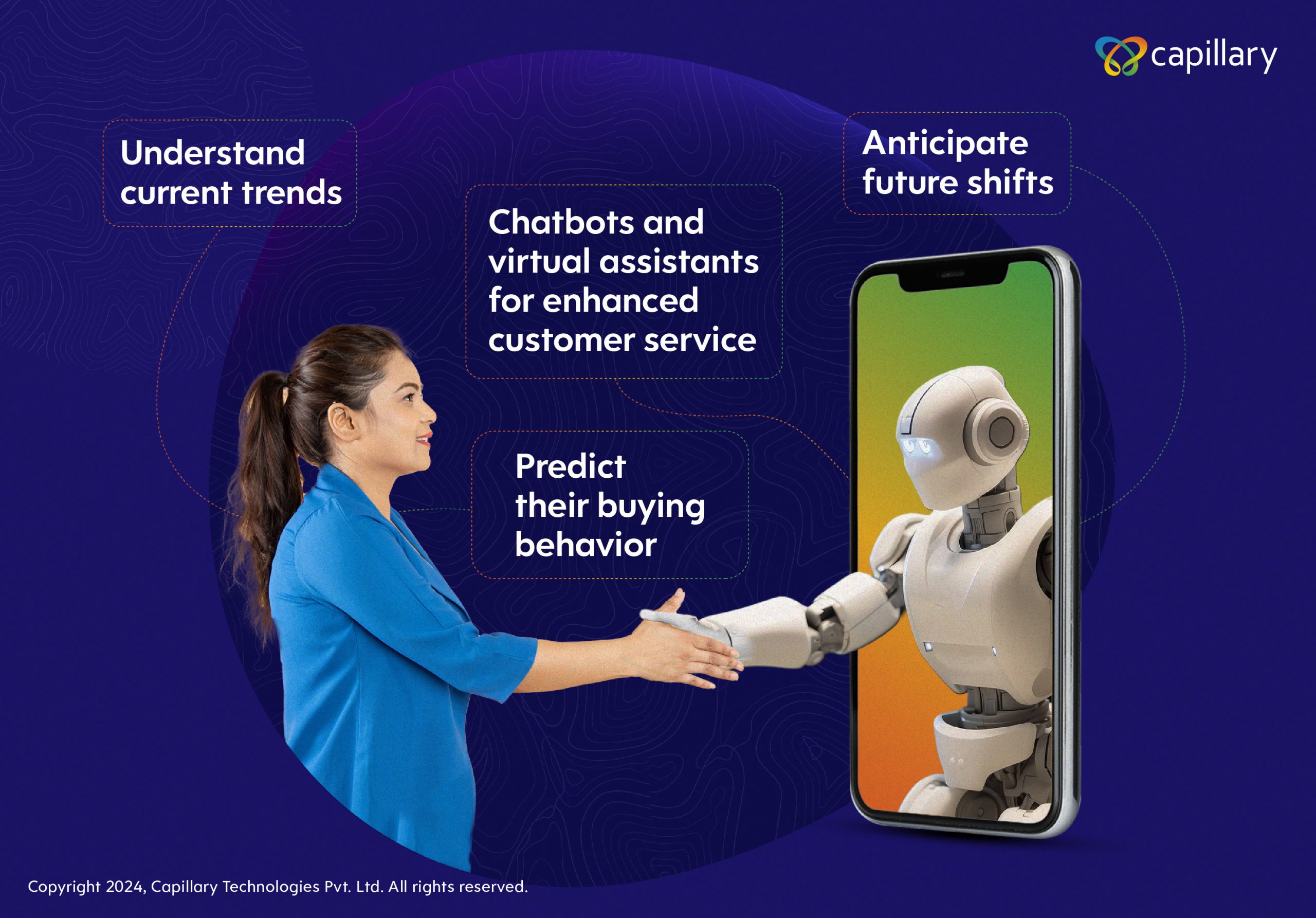From backroom inventory management to personalized shopping experiences, Artificial Intelligence (AI) is revolutionizing the retail sector in unimaginable ways. Brands leveraging AI in customer loyalty can craft hyper-personalized experiences, predict consumer behavior, and automate engagement strategies at scale. The result? Stronger connections, higher lifetime value, and greater customer retention.
As 2025 unfolds, the fusion of AI and retail loyalty programs is reshaping how businesses build brand affinity. From AI-driven customer engagement to real-time personalization, retailers that embrace these innovations will stay ahead of the competition.
Here are ten remarkable ways AI is changing customer loyalty in the retail industry. These AI features are not only reshaping the shopping experience but are also helping retail companies forge stronger bonds between brands and their customers.
10 Ways AI is Revolutionizing Retail Loyalty
1. AI-Driven Personalized Rewards
One of the key ways AI is revolutionizing retail loyalty is by tailoring personalized rewards and it does so by meticulously analyzing customer data, including past purchases, preferences, and even browsing behaviors, to create a comprehensive customer profile. By doing so, retailers can offer rewards that resonate with individual customers on a deeply personal level and are relevant to the customers. AI also excels in determining the optimal moment to engage a customer, ensuring that the rewards feel not only personalized but also timely.
For instance, consider a customer who frequently purchases eco-friendly products. AI can identify this pattern and tailor rewards that align with their values. This might include offering them exclusive access to new sustainable product lines or even making contributions to environmental causes in their name. This level of hyper-personalization not only delights the customer but also reinforces their loyalty to a brand that understands and values their choices.
This combination of relevance and timing creates a powerful bond between the customer and the retailer, enhancing loyalty and driving repeat business.
2. AI-Powered Personalized Recommendations
According to a study conducted by Wakefield Research, approximately 72 percent of consumers tend to have greater trust in a company when they receive recommendations that are highly relevant to their needs. Moreover, nearly 49 percent of respondents expressed a strong likelihood of returning to businesses that offer these personalized recommendations. The role that AI plays in making these personalized recommendations keeps getting better day by day.
Look at the case of Amazon.
In 2021, a staggering 35 percent of what consumers purchased on Amazon was a result of product recommendations generated by AI algorithms. These algorithms consider a multitude of factors, including previous purchase history, browsing behavior, and even demographic information. When a customer visits Amazon’s website, they are greeted with a homepage filled with product recommendations tailored specifically to their interests. This not only simplifies the shopping process but also entices customers to explore more, increasing the likelihood of making additional purchases. As a result, personalized recommendations have become a cornerstone of Amazon’s continued success, contributing significantly to customer satisfaction and loyalty.
3. Using Predictive Analytics
By employing statistical data modeling and machine learning techniques to identify hidden buying patterns, potential sales opportunities, and emerging trends, predictive analytics driven by AI is becoming a powerful tool for retailers. Retailers can use vast stores of historical data, combined with real-time sales data, to anticipate individual customer needs accurately.
Imagine being able to predict your customers’ needs even before they articulate them. AI predictive analytics grants businesses this superpower, enhancing customer experiences. By analyzing past purchases, browsing behaviors, and industry trends, retailers can proactively provide recommendations and support.
For instance, a fashion retailer might notice that a customer frequently purchases summer dresses in May. AI-driven predictive analytics can anticipate this pattern and recommend new summer dress arrivals to the customer just in time for their seasonal shopping. As a result, customers feel heard, valued, and understood, leading to increased loyalty and trust.
Capillary’s Insights+, an advanced AI & ML powered Business Intelligence tool has been instrumental for several of our clients in using predictive insights to model their decision-making to drive better results.
4. Enhancing the In-Store Experience
AI is reshaping the in-store retail experience by creating a frictionless and convenient shopping environment for end customers. A BCG report mentioned that brands that create personalized experiences by integrating advanced digital technologies and proprietary data for customers are seeing revenue increase by 6% to 10% — two to three times faster than those who don’t, hinting at how this integration is the need of the hour for retailers.
Taco Bell, a QSR brand had a jumpstart here when it allowed customers to order food through AI. Their AI bot (called Tacobot) works with Slack to make it easy for customers to place their orders. Following each order, the bot in typical Taco Bell fashion responds with witty and clever remarks, establishing a connection with the customers.
Beauty brand Sephora too leveraged the power of AI to improve their in-store experience. Their bot ColorIQ scans the customer’s face and recommends personalized items based on its analysis.
By bringing AI-powered devices like kiosks, digital signage, self-checkout, and others, retailers can create seamless in-store experiences for their customers.
5. AI-Powered Targeted Promotions
AI’s ability to create highly targeted promotions has become a game-changer in the retail loyalty landscape. By analyzing vast datasets, AI can understand customer preferences, behaviors, and purchasing habits. This allows retailers to tailor promotions that nudges customers to make a purchase.
Consider a beauty retailer for example. Using AI, the retailer can identify if a particular customer often purchases skincare products designed for sensitive skin. They can also notice if this customer frequently engages with content related to organic and cruelty-free beauty products on the retailer’s website. Armed with this information, the retailer can send personalized promotions that offer discounts on premium organic skincare products specifically curated for sensitive skin.
Such personalized promotions not only increase the chances of conversion but also strengthen the customer’s emotional connection with the brand. When customers receive offers that align perfectly with their preferences, they feel valued and appreciated.
6. Personalized AI Chatbots
AI-driven chat support is a key element in enhancing retail loyalty. It provides customers with personalized assistance, addressing their inquiries and concerns in real-time. An AI-powered chatbot can also offer details about upcoming products tailored to the customer’s preferences, allowing them to place pre-orders for these items in advance. This not only streamlines the shopping experience but also fosters loyalty by delivering efficient and tailored support.
American office supply retail company Staples uses IBM’s AI technology, IBM Watson to run their chatbot service. This integration makes ordering on Staples easier than before. The speech-to-text capabilities of the bot make it easy to place an order or ask a question. You can not only place an order but also track it and share your honest feedback.
The beauty of AI-driven chat support lies in its ability to engage customers in a conversational manner, just as a knowledgeable sales associate would in a physical store. This personalized assistance creates a sense of trust and convenience, which are essential elements of fostering loyalty.
7. Omnichannel Retail Experience
AI enables retailers to provide customers with a seamless and consistent experience across all retail channels, whether online or offline. This AI-driven customer engagement fosters loyalty by allowing customers to switch between channels effortlessly, creating a more intuitive and connected shopping journey.
A classic example of this AI-powered omnichannel retail strategy can be found in large retailers like Walmart. Customers can browse products online, check inventory in real-time, make purchases, and even schedule in-store pickups—all from the comfort of their homes. If they decide to visit a physical store, they find the same AI-driven pricing strategies and product availability they saw online, ensuring a frictionless experience.
This level of consistency and AI-enhanced convenience ensures that customers can engage with the brand in a way that suits their preferences at any given moment. Whether they prefer online shopping or enjoy the tactile experience of in-store browsing, AI in customer loyalty helps them transition seamlessly between channels. As a result, customers are more likely to remain loyal to retailers that offer such flexibility and AI-powered personalization in their shopping journey.
8. AI-Driven Dynamic Pricing
Dynamic pricing, powered by AI, is a strategy that optimizes prices based on real-time market data. It ensures that customers receive competitive pricing, thereby enhancing their loyalty to retailers that consistently offer fair and competitive prices.
Companies like Amazon, and Walmart, and airlines like Delta and United have implemented dynamic pricing algorithms to adjust prices in real-time based on factors such as demand, inventory levels, competitor prices, and customer behavior.
This dynamic pricing strategy not only attracts price-sensitive customers but also maintains a competitive edge for the airline. By providing customers with optimal pricing, AI-driven dynamic pricing creates a sense of trust and fairness. Customers are more likely to choose airlines that offer transparent and competitive pricing, leading to increased loyalty.
9. Augmented Reality (AR) Try-On
Augmented Reality (AR) product try-on is another innovative feature transforming the retail industry. It allows customers to virtually try on products before making a purchase, significantly enhancing their shopping experience and driving loyalty to brands that offer this feature.
Companies like Apple and IKEA have utilized augmented reality (AR) to enable customers to visualize how products would appear in their living spaces. High-end retailer PRADA is another company that has successfully implemented this technology to create an enriching and smooth experience for their customers.
This feature not only adds an element of fun and interactivity to the shopping process but also reduces the uncertainty associated with online shopping. Customers can confidently select items that suit their style and preferences. As a result, they are less likely to return products due to mismatched expectations, leading to increased satisfaction and loyalty.
10. Data Security and Privacy Controls
According to a Payments Journal article, direct and indirect losses from loyalty and rewards programs are estimated to exceed $1 billion, signaling an urgent need for AI-powered fraud detection in customer loyalty.
AI-driven fraud detection systems are essential for ensuring a secure retail loyalty environment, fostering customer trust, and upholding data security and privacy. These systems protect AI-driven customer loyalty programs from online scams and breaches, ensuring a seamless and safe shopping experience.
Consider a scenario where a customer shops at an online marketplace. AI algorithms in customer loyalty solutions constantly monitor transactions for suspicious activities, such as unusually large purchases or orders from unfamiliar locations. If any suspicious activity is detected, the system can trigger additional verification steps, such as sending a one-time authentication code, reinforcing AI-powered fraud prevention in retail loyalty programs.
As businesses harness the power of AI in loyalty programs to deliver personalized rewards, provide AI-driven customer recommendations, and create seamless omnichannel loyalty experiences, they are building deeper emotional connections with customers. Retailers that integrate AI-powered customer loyalty solutions will stay ahead, ensuring sustained engagement and increased customer lifetime value.
The Result?
Increased loyalty, trust, and satisfaction that not only ensures the survival of brands in a fiercely competitive market but also propel them toward future success. As we stand on the cusp of this AI-driven retail revolution, one thing is clear: the future of retail loyalty is here, and it’s powered by the relentless innovation of AI.
As we move further into 2025, the brands that thrive will be those that embrace AI in customer loyalty as a core strategy, not just a trend. By leveraging intelligent insights, automation, and personalized rewards, retailers can foster deeper relationships, drive revenue, and future-proof their loyalty programs for years to come. Capillary’s AI-powered product suite and loyalty platform can help you kickstart your journey toward creating delightful and memorable experiences for your customers and nurture long-term loyalty. Get in touch with us now./span>
FAQs
1.How can AI improve customer loyalty in retail?
AI can enhance customer loyalty in retail by providing personalized experiences, predictive analytics, and targeted marketing campaigns, increasing customer engagement and retention.
2.What are the benefits of using AI in retail loyalty programs?
AI-driven retail loyalty programs offer personalized rewards, real-time customer insights, and automated customer service, leading to increased customer satisfaction and loyalty.
3.Which AI tools are essential for retail businesses to boost customer loyalty?
Essential AI tools for retail businesses include predictive analytics platforms, personalized recommendation engines, and chatbots, which help create a more personalized and efficient customer experience.
4.How does AI-driven personalization increase retail sales?
AI-driven personalization increases retail sales by analyzing customer data to offer tailored recommendations and promotions, which leads to higher conversion rates and customer satisfaction.
5.What are some examples of successful AI implementations in retail loyalty programs?
Successful AI implementations in retail loyalty programs include personalized discount offers, automated customer segmentation, and predictive analytics for inventory management, enhancing overall customer experience and loyalty.
